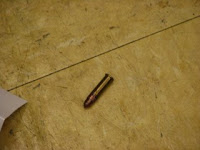
1. Cause of death.
The cause that seemed evident and supported by most of the evidence was homicide, or the killing of a person when another kills them. It just seemed legitimate in our perspective.
2. Explain death.
The reign of the Incas was not as long as a typical empire would last. With only approximately 325 years of exsistance the empire collapsed in the clutches of the mighty and dominate Spanish conquistadors. The leader of the conquistadors in the Inca empire was Fransisco Pizzaro. He gained the fortunes of the Incas and relinquished them of their land. The civilization collapsed and the names of the Incas were written along the lines of history...











